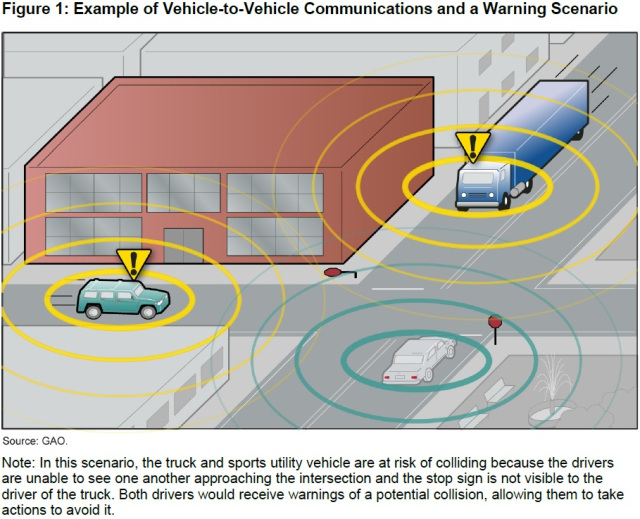Vehicle-to-Vehicle Technologies—the Future of Road Safety?
 (Excerpted from GAO-14-13)
(Excerpted from GAO-14-13)
 (Excerpted from GAO-14-13)
(Excerpted from GAO-14-13)
- Nearly all vehicles on the road would need V2V technologies to achieve significant safety benefits;
- Drivers must still respond to the V2V warnings. If drivers are, for example, distracted, V2Vs may be less effective;
- The costs of equipping vehicles with V2Vs are unknown. While many experts we met with said that the costs of equipping vehicles with V2Vs are not likely to be significant, the costs of a system needed to ensure the security of the data transmitted between vehicles could be; and
- Overcoming potential privacy concerns of drivers and the public in a system that involves sharing data among vehicles could hamper development and adoption.
- Questions about the content of this post? Contact David Wise at wised@gao.gov.
- Comments on the WatchBlog? Contact blog@gao.gov.

GAO's mission is to provide Congress with fact-based, nonpartisan information that can help improve federal government performance and ensure accountability for the benefit of the American people. GAO launched its WatchBlog in January, 2014, as part of its continuing effort to reach its audiences—Congress and the American people—where they are currently looking for information.
The blog format allows GAO to provide a little more context about its work than it can offer on its other social media platforms. Posts will tie GAO work to current events and the news; show how GAO’s work is affecting agencies or legislation; highlight reports, testimonies, and issue areas where GAO does work; and provide information about GAO itself, among other things.
Please send any feedback on GAO's WatchBlog to blog@gao.gov.
